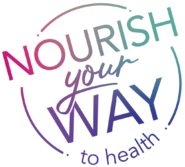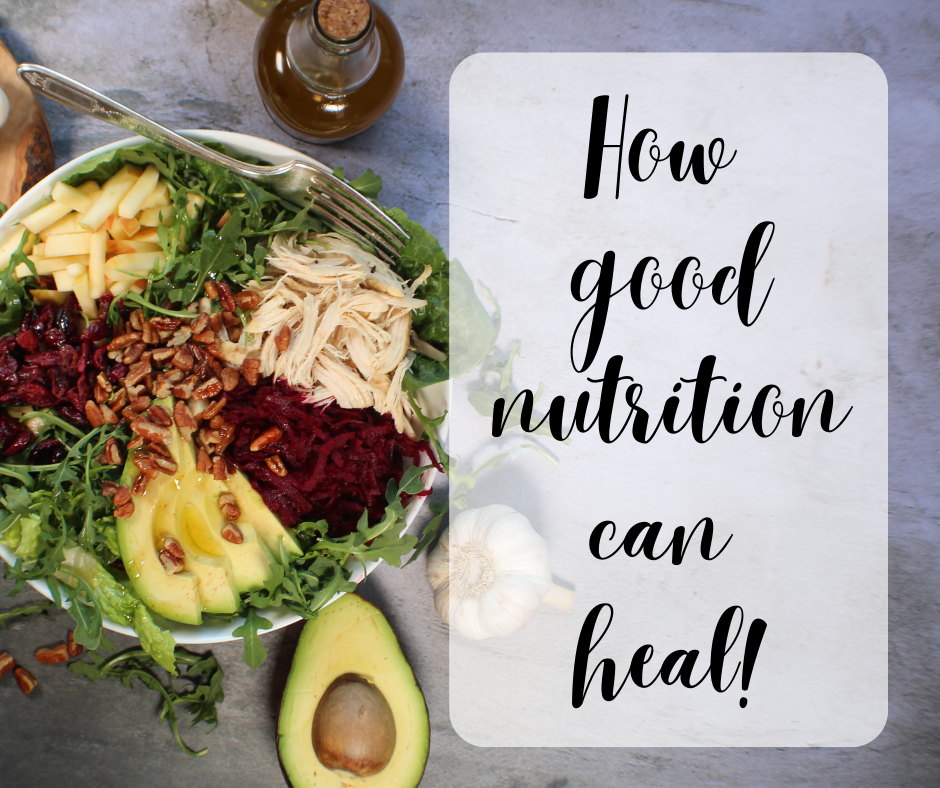
What kind of foods heal?
I was blown out of the water when I learned that simply changing one’s diet can start healing a disease and eventually help symptoms disappear. Whole, real food is what has the best health benefits like veggies, fruit, and quality animal proteins. A lot of truth from our Mother’s who said “Eat your vegetables”. I remember not getting dessert if I didn’t eat those green things!
When I was younger I remember the triangular food pyramid. Well, now it has been debunked! I learned that the wheat and dairy industry had lobbied to get dairy and grains on the pyramid. 6 to 11 servings of bread/grains??? Eating this may carbs can pack on pounds for sure and will eventually put a person on the way to pre-diabetes, diabetes, or other diseases. Flour products turn into sugar in the body and sugar turns into fat. No wonder why so many people have a hard time losing weight because we were given the wrong messages! What I have learned is that grains and dairy are not needed for the body for optimal health.
The food pyramid - released in 1992
Incorrect Message
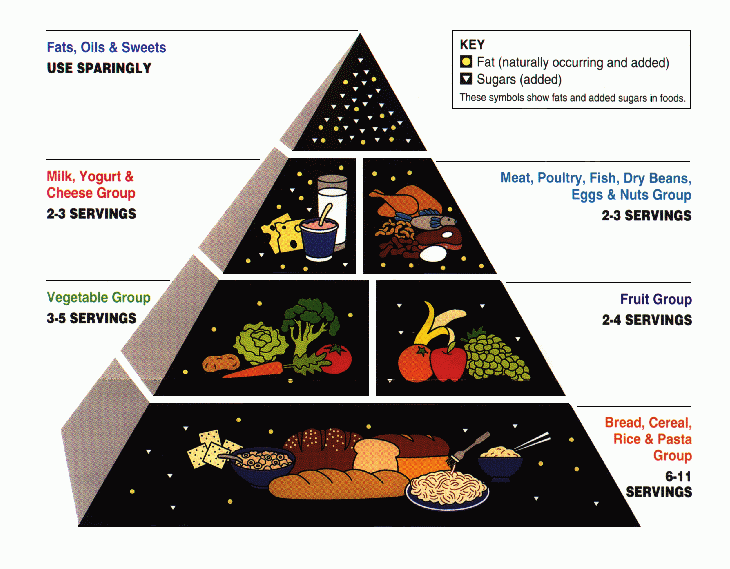
6-11 Servings of Grains? The human body doesn’t need grains for optimal health. Too many causes weight gain and health problems. This could be one reason why so many Americans are in a chronic & metabolic disease crisis.
5 Staple foods in my diet
Many superfoods exist—these are some of my favs! Remember, the body likes variety so eat a rainbow of fruits and veggies daily. Quality wild-caught, fatty fish and organic animal proteins have a ton of benefits with vitamins and minerals.
1. Dark Leafy Greens

Dark leafy greens contain the important antioxidant vitamins—A,C, E, and K. They are also an excellent source of fiber, folate, carotenoids, iron, and calcium. These greens help nourish the nervous system and manage stress with their anti-inflammatory omega-3 acids and B vitamins. These nutrients remove free radicals from the body.
The body needs dietary fat to absorb the carotenoids and vitamin K (fat-soluble vitamins) present in leafy greens. Adding one or two teaspoons of olive or avocado oil when cooking dark leafy veggies increases the absorption of these nutrients. You also can eat uncooked leafy greens with salad dressing that contains good oils, like olive oil for example.
All types of dark greens, lighter greens, or red leaf lettuce are included for the best nutrition. Iceberg lettuce does not fall into this category—It isn’t nutrient-dense like other greens and consists mostly of water.
A popular list of dark leafy greens:
*Spinach, Kale, *Arugula, Swiss Chard, *Collard Greens, *Mustard Greens, *Bok Choy, Romaine Lettuce, *Dandelion Greens, Beet Greens, Cabbage, Watercress, and Parsley *Indicates high in calcium
How much should you eat? The more the better! Two to three cups per day should keep your body and systems happy.
Ways to get your greens in:
1. In smoothies
2. In salads
3. In side dishes
4. Lightly steamed or sautéed
5. Dehydrated (kale chips)
I personally eat at least 2 cups a day of dark greens. Smoothies are a great way to get them in for the day—they are amazing with fruit! Salads are another way I love to have them!
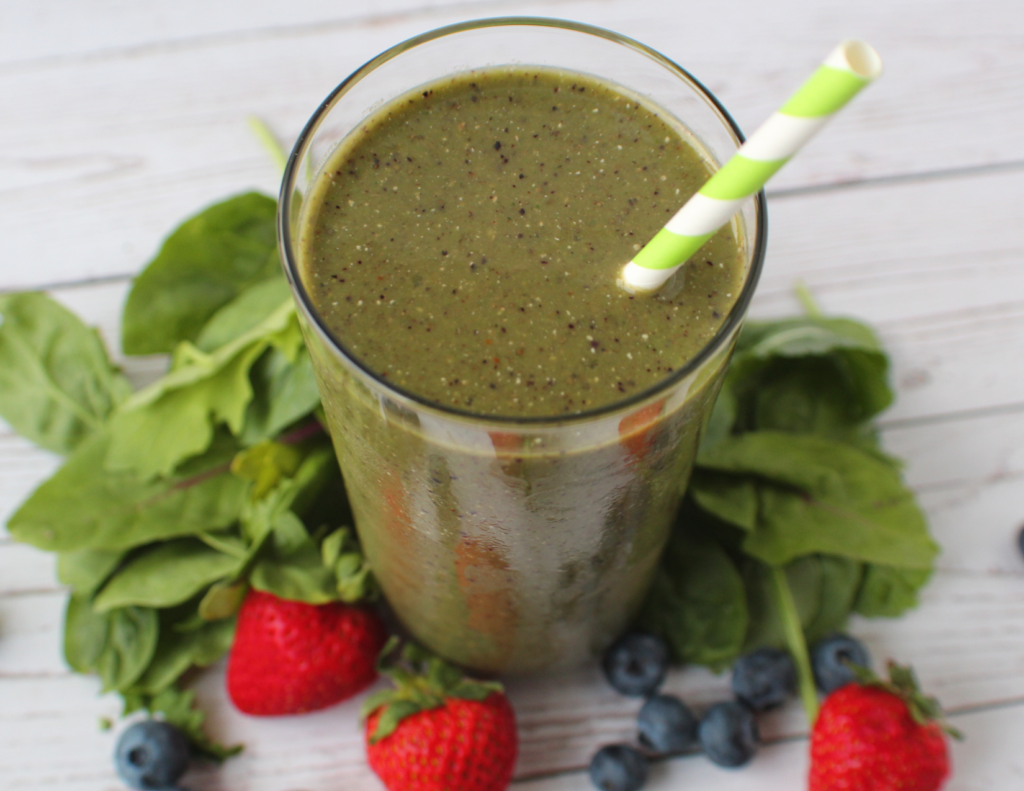

2. Fruit—especially berries!
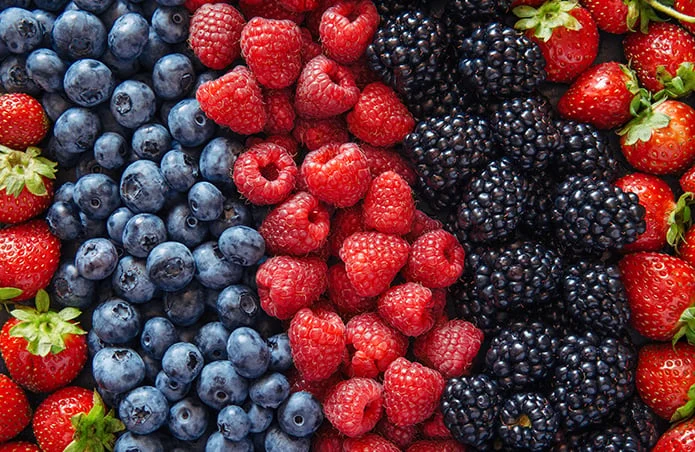
Each fruit brings its own unique set of nutrients and benefits to the table. Eat fruits of various colors, as each color provides a different set of healthy nutrients. If you think of all the nutrients available here, you’ve pretty much got the alphabet of vitamins. The same goes for minerals and antioxidants.
Some of those nutrients, like vitamin C and potassium, are absolutely vital to our survival. To keep our hearts pumping, we need potassium. Fruits like peaches, bananas, figs, avocados, and kiwi are loaded with it.
Berries are super fruits. They include blackberries, blueberries, cranberries, raspberries, and strawberries. These super-food berries are low in sugar, high in antioxidants (which fight free radicals in the body), and contain fiber and vitamin C. Considering their small size, berries pack a punch in providing the body with nutrition.
3. Vegetables – especially cruciferous ones!

Not only are vegetables increasingly recognized as essential foods, they are also a powerhouse of essentials with numerous vitamins and minerals. We can select from a rainbow; each color brings its own benefits.
White: Cauliflower, garlic, ginger, onions, parsnips, potatoes, turnips, white leeks, white mushrooms. These offer a ton of IMMUNE support. A few more benefits: strengthens bones, supports the heart, and helps fight bad cholesterol.
Yellow & Orange: Carrots, corn, golden beets, yellow and orange peppers, pumpkin, squash, sweet potatoes, yellow beans. Many of these have BETA-CAROTENE which converts to vitamin A in the body. Vitamin A repairs tissue, keeps teeth and bones strong, and assists in fighting infections. These colors also bring antioxidant properties.
Red: Beets, radishes, red onions, red peppers, red potatoes, rhubarb, tomatoes. This color aids in HEART HEALTH, memory function, and the urinary tract. Reds also fight the free radicals in the body.
Purple & Blue: Eggplant, purple asparagus, purple cabbage, purple carrots, purple green beans, purple sweet potatoes. Purples and blues aid LONGEVITY and contain many antioxidants. A plant pigment called “anthocyanin” gives these powerhouses their color. They promote healthy aging, reduce the risk of stroke, and aid in gut health.
Green: Artichoke, asparagus, broccoli, cucumber, celery, green beans, green pepper, peas, zucchini. Many greens provide DETOXIFICATION in the body. They are storehouses of iron and fiber and improve the body’s metabolism. Green veggies also contain a high concentration of folate (B9), which improves brain function.
Cruciferous veggies:
Cruciferous vegetables are low-calorie, and rich in folate, vitamins C, E, and K, and fiber. Fiber is an important nutrient to incorporate if weight loss is the goal, as it helps keep you fuller longer.
- arugula
- bok choy
- broccoli
- Brussels sprouts
- cabbage
- cauliflower
- kale
- radish
- turnips
4. Quality animal protein
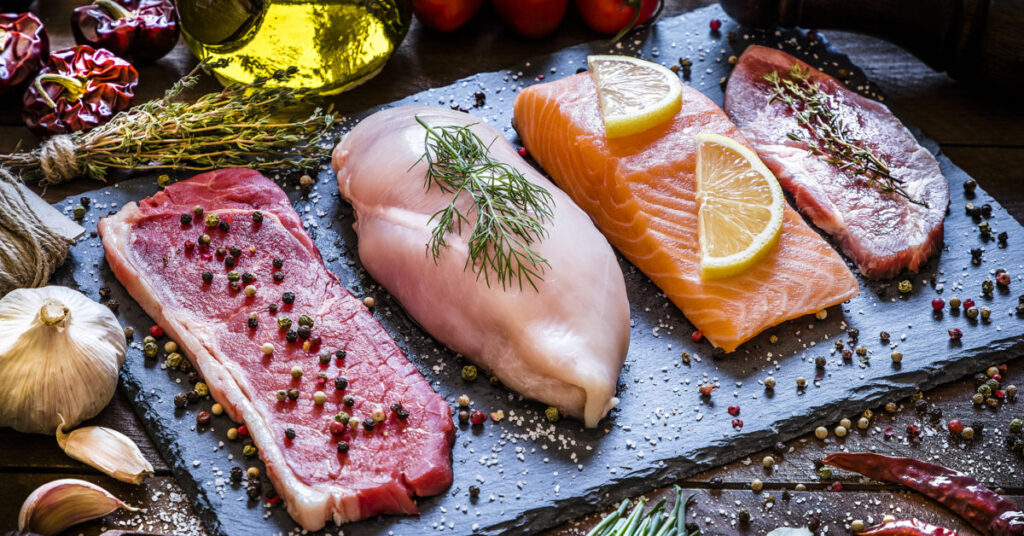
Natural animal products are nutrient-rich and helped me heal.
Consuming quality meats also keeps us full longer. Part of what helped me was eating pasture raised, organic meats, and wild-caught fish. These kind of meats are so much better for us! These kinds of animal proteins are “natural” foods and are not fed by humans. The problem with conventional or commercially raised meat products is the fact that humans are feeding them and these animals are usually not healthy. These types up animals are also sometimes raised in inhumane conditions. I realize that many people have religious or ethical views and I understand this.
Also, naturally raised red meat does NOT cause heart disease and does not cause your bad cholesterol (LDL) to rise. Just ask Dr. Mark Harmon. He’s just one of the functional medical doctors that I follow.
Yes, these animal products ARE more expensive, but I look at it this way; either you pay for quality, healthy meats now, or pay for doctors and medications later. I can’t stress enough how important quality animal products are including consuming eggs from pasture–raised chickens. The eggs are so much healthier and provide more nutrients.
My husband and I get our beef from a local friend who raises beef just outside his home and they eat grass and get lots of sun (vitamin D!). We buy 1/4 of a cow every year and stock it in our freezer. It usually lasts us all year! You can find an outfit like this online and have it shipped to you if necessary.
We also buy local eggs from a friend who has pasture-raised chickens. In the winter, when the chickens slow down their production, we will buy eggs from pasture-raised chickens at our local health-food grocery store.




5. Nuts and seeds
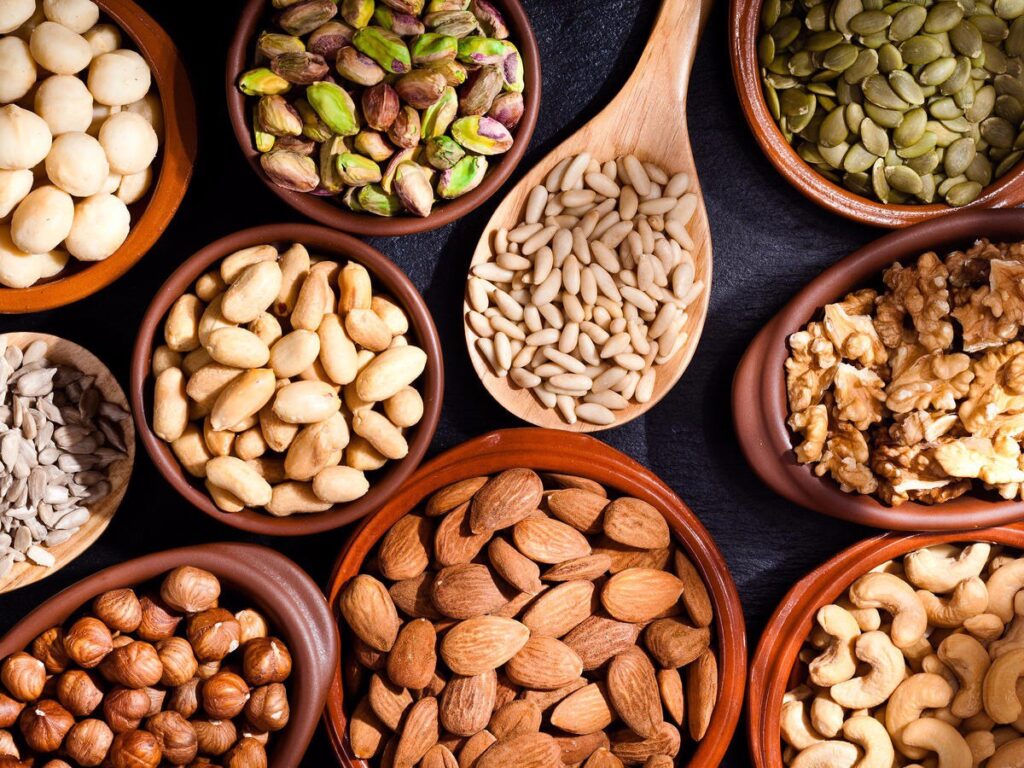
Nuts and seeds consumed in moderation are a health-promoting food. Many studies have shown that small amounts of nuts (about 1.5 ounces) per day contribute to heart health, weight management, and benefit our gut microbiome.
Each type of nut provides a different type nutrient including vitamins A, B, and E, biotin, calcium, copper, folic acid, iron, niacin, omega 3 and 6, potassium, riboflavin, thiamine, and zinc.
Nuts:
Almonds
Walnuts
Pistachios
Hazelnuts
Macadamia Nuts
What about peanuts?
Peanuts are not a nut, but a legume (a type of bean). Some people are highly allergic to peanuts; others with a sensitivity develop mild symptoms like rashes or indigestion. Peanuts are not part of the paleo diet. They contain aflatoxins, a kind of mold which is not healthy for us. This is why I personally steer clear of them.
Seeds:
They’re small but mighty, and packed full of nutrition!
- They are a good source of dietary fiber, which slows the rate of digestion and keeps your digestive system on track.
- They provide you with good fats, which nourish the blood cells and help maintain brain function.
- Along with nuts, they reduce the levels of inflammation in the body, which staves off ageing and reduces the risk of heart disease.
- They contain plant sterols, that help keep cholesterol levels in check and reduce the risk of cancer.
- They are rich in trace minerals like selenium, magnesium, copper and zinc, which is required by our bodies.
- Over time and consumed regularly, seeds can help prevent weight gain.
Here’s to your health!
Adrienne 😉
xo
Nourish your Way to Health – a cookbook full of nutrient-rich foods. Full of nutritional info and delicious, healthy recipes!

